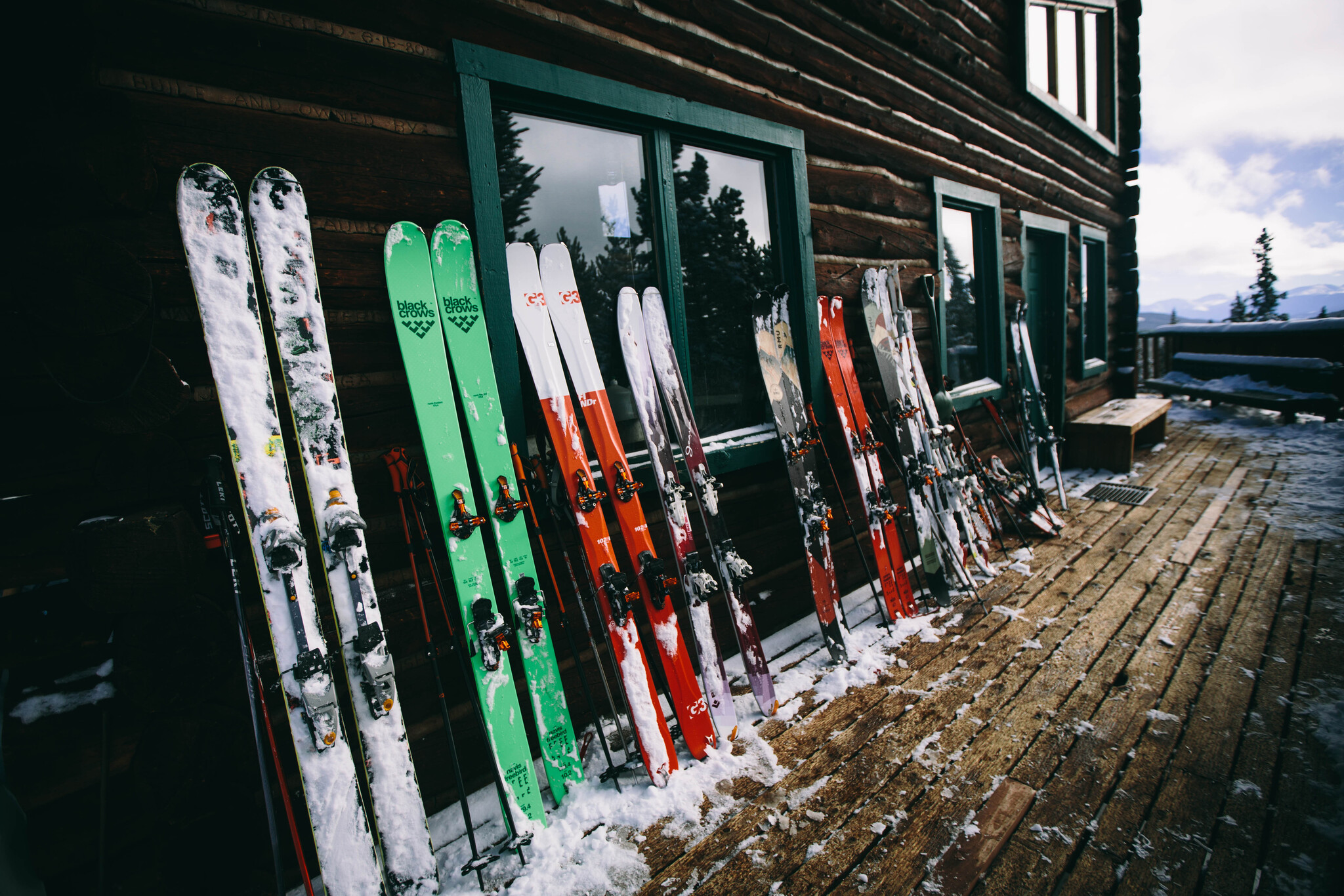Spring Backcountry Preparedness with BVMA
- Posted on
- By Happy Folks at The Trailhead
- 0

Spring has arrived! And with that comes spring backcountry adventures. Buena Vista Mountain Adventures (BVMA) has all the tools, knowledge, and guides to get you going.
Spring has arrived! And with that comes spring backcountry adventures. Buena Vista Mountain Adventures (BVMA) has all the tools, knowledge, and guides to get you going.
If you want to get into the backcountry, Buena Vista Mountain Adventures (BVMA) is here to support you. BVMA lead trips and educational courses for all levels of outdoor enthusiasts, and specialize in the winter adventures that make Colorado a world class destination.
How to Prepare for Spring Backcountry Conditions
Our friends at NEMO have put together a great guide to help you prepare for spring backcountry. We’ve jotted down the highlights below.
1. Don't Bite Off More Than You Can Chew
While it's tempting to dive headfirst into ambitious trekking plans after months of winter hibernation, it's essential to temper your expectations. Consider your current fitness level and the added challenge of carrying gear for spring conditions. Start with a shorter, more manageable trip to ease back into backpacking and allow room for adjustments along the way.
2. Trails Have Changed! Expect the Unexpected
Winter's grip leaves its mark on backcountry trails, with snowmelt, fallen trees, and eroded paths transforming familiar routes. Approach your hike with flexibility and patience, as you may encounter unexpected obstacles and delays along the way.
3. Check the Conditions
Spring weather in Colorado can vary drastically, from balmy days in the valley to lingering snow and freezing temperatures in the mountains. Stay informed about current trail conditions and weather forecasts, and adjust your plans accordingly. Reach out to local park offices or utilize online resources for up-to-date information before hitting the trail.
4. Don't Put Away That Winter Gear Just Yet
Even as spring brings warmer temperatures, don't be too quick to stash away your winter gear. Traction devices for your boots, insulated layers, and waterproof outerwear remain essential for navigating lingering snowpack and unpredictable weather conditions at higher elevations.
5. "Wet" is a Game Changer — Watch Out for Hypothermia
Spring showers and melting snow can leave backpackers vulnerable to hypothermia, even in relatively mild temperatures. Prioritize staying dry by investing in waterproof gear, packing extra layers, and avoiding prolonged exposure to wet conditions.

6. Give Your Gear a Test Run
Before venturing into the backcountry, take the time to inspect and familiarize yourself with your gear. Set up your tent, check your sleeping bag and pad for any damage or wear, and ensure that all components of your gear system are in working order. A trial run in your backyard or living room can help identify any issues and build confidence in your equipment.
7. Understand What "Three-Season Tent" Really Means
Choose a tent that suits the conditions you'll encounter during spring backpacking. While three-season tents offer versatility and breathability, be mindful of their limitations in handling snow loading and wind resistance. Prioritize spaciousness and durability to weather spring's unpredictable elements comfortably.

8. Get Down With A Water-Resistant Bag
Spring camping often involves damp conditions, making a water-resistant sleeping bag a wise investment. Opt for synthetic insulation or treated down to retain warmth even when wet, ensuring a comfortable and restful night's sleep.
9. Don't Wear Cotton. Just Don't.
Cotton clothing retains moisture and can exacerbate cold and wet conditions, leading to discomfort and increased risk of hypothermia. Instead, choose moisture-wicking materials like merino wool and layer strategically to regulate body temperature and stay dry.

10. Remember the Forgettables
Create a comprehensive packing list to avoid overlooking essential items. Commonly forgotten items include headlamps, stove components, eating utensils, and water purification systems. Double-check your gear before departure to prevent any surprises on the trail.
11. Speaking of Water Purification...
Be prepared for varying water sources and conditions by selecting an appropriate purification method. Consider factors such as temperature and water quality when choosing between iodine tablets, pumps, or filtration systems. Ensure that your chosen method is effective and accessible throughout your journey.
12. You Might Be Hungrier Than You Think
The exertion of backpacking combined with cold temperatures can significantly increase caloric needs. Pack ample snacks and meals to fuel your adventures, and consider hot meals for added warmth and comfort during chilly evenings.
13. The Bugs are a Battle. Here's How to Win.
Prepare for spring's insect onslaught by wearing long sleeves, pants, and insect repellent. Consider investing in a head net for added protection and set up a bug-free zone with a screened shelter or tent vestibule for relaxation and mealtime.

14. Watch Out for Your Best Friend (We Mean Your Dog)
If hiking with a canine companion, prioritize their comfort and safety by providing insulation and protection from wet conditions. Pack a towel for cleaning muddy paws and consider using a washable floor mat or paw print to protect your tent interior.
15. Respect the Trails. Minimize Your Impact.
Spring trails are particularly vulnerable to erosion and damage, requiring extra care to minimize environmental impact. Stay on designated trails, avoid creating new paths, and choose durable campsite locations to preserve fragile vegetation and wildlife habitats.
16. Be Aware of Wildlife
Spring marks a period of increased activity for wildlife, including emerging bears, stressed moose, and nesting birds. Respect wildlife by maintaining a safe distance, refraining from feeding or approaching animals, and practicing proper food storage to minimize human-wildlife encounters.


Comments
Be the first to comment...